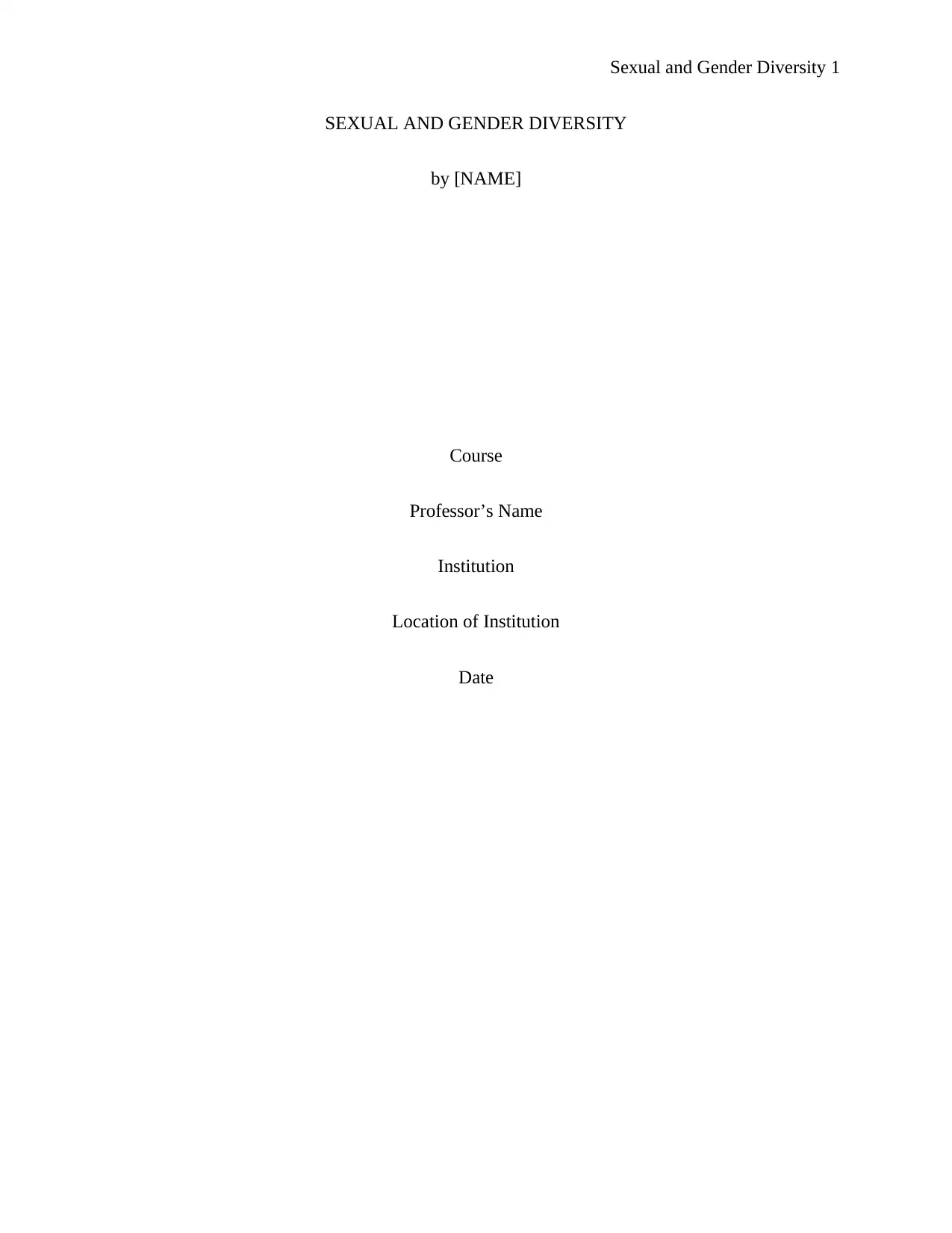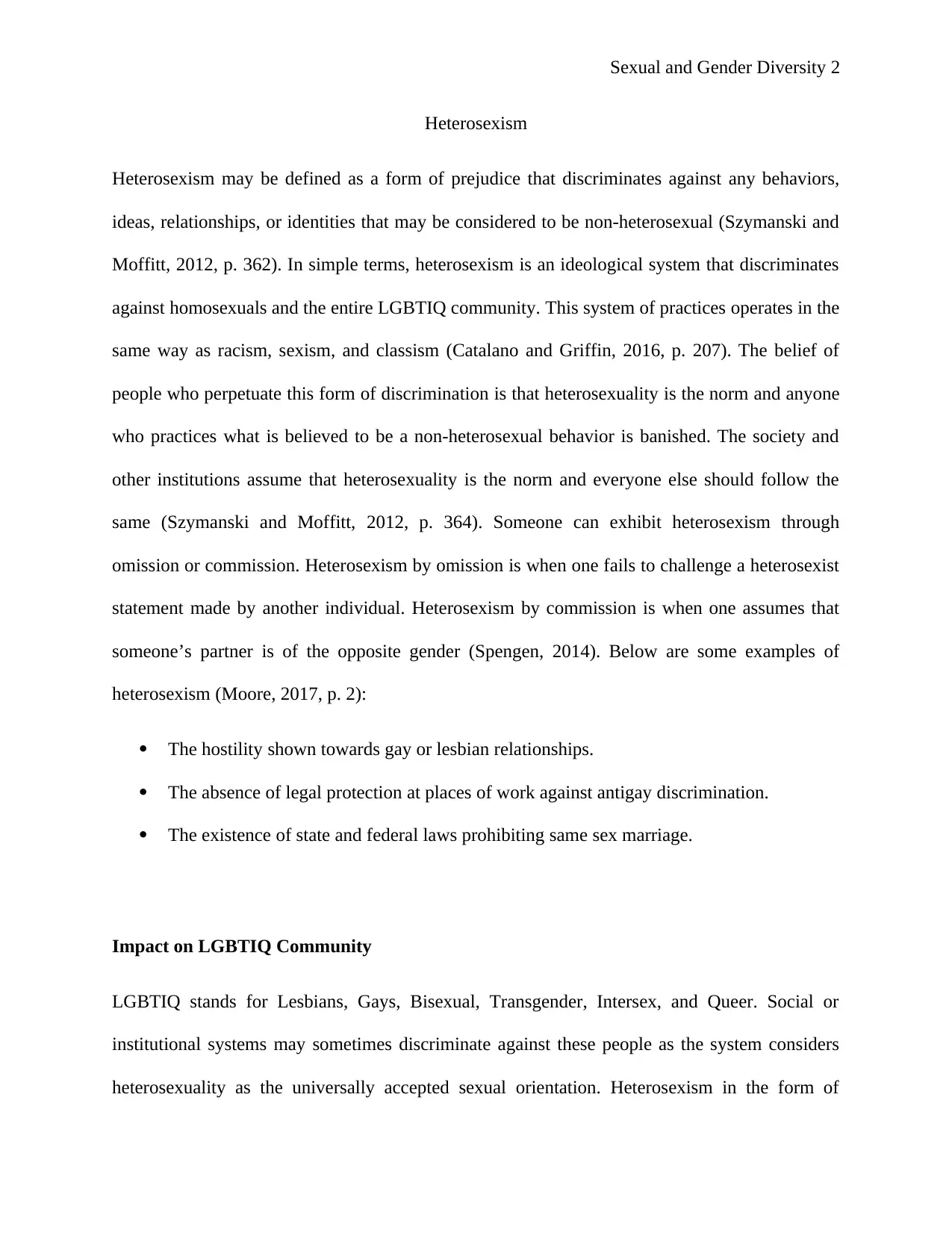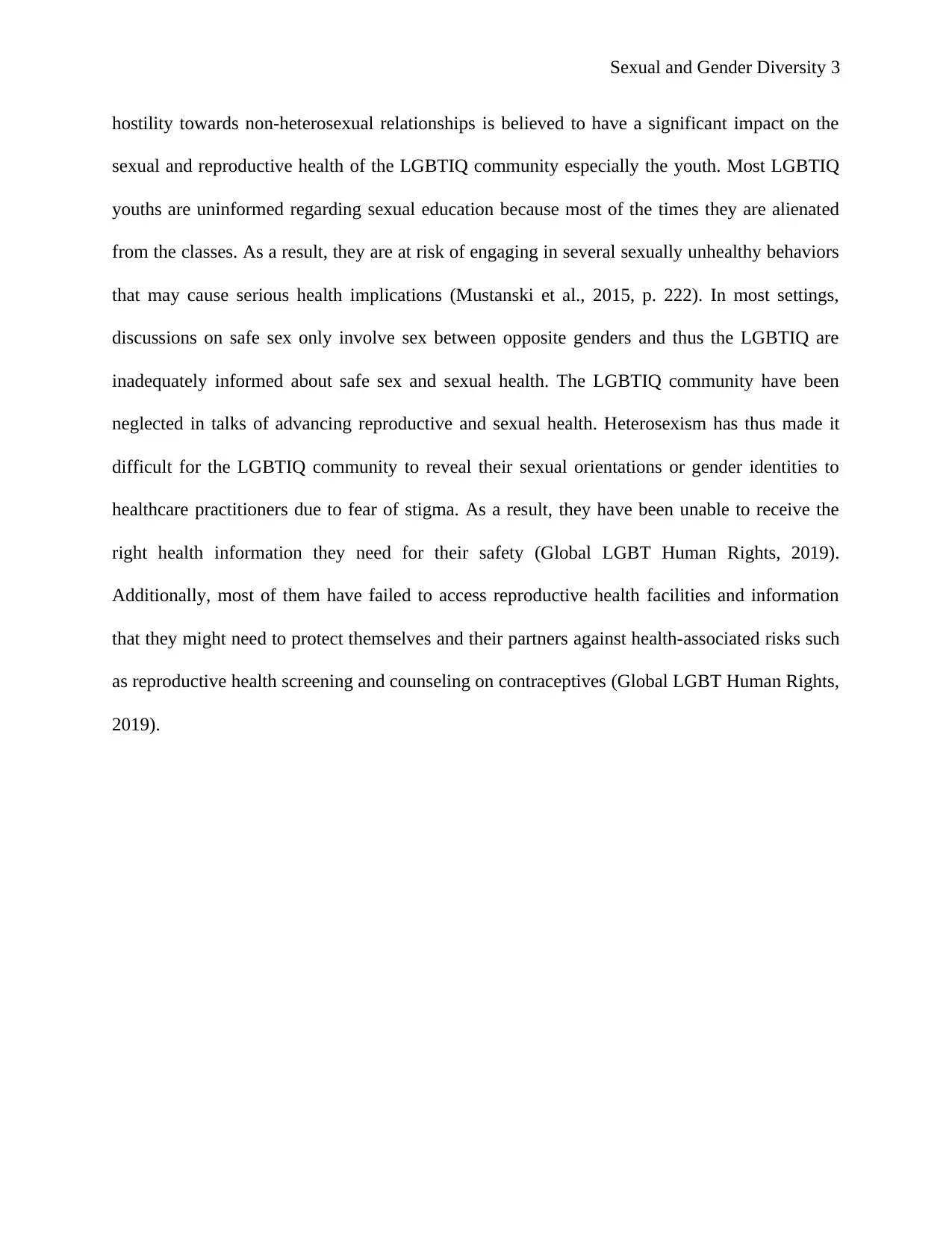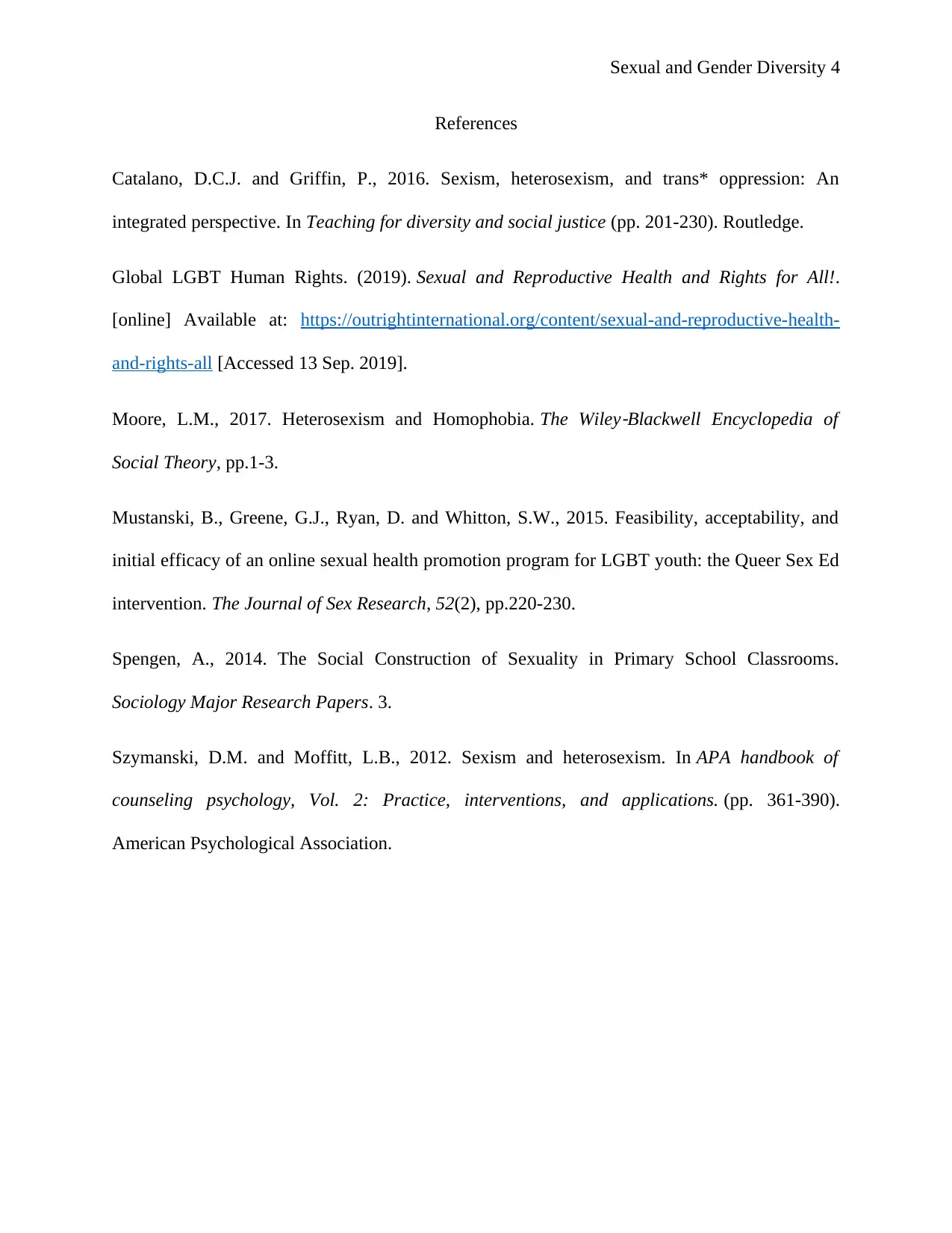Sexual and Gender Diversity: Heterosexism, Impact on LGBTIQ Report
VerifiedAdded on 2022/11/29
|4
|767
|326
Report
AI Summary
This report provides an overview of sexual and gender diversity, defining heterosexism as a form of prejudice that discriminates against non-heterosexual behaviors, ideas, and identities. It explains heterosexism through omission and commission, offering examples like hostility towards gay relationships and the absence of anti-gay discrimination protections. The report then explores the impact of heterosexism on the LGBTIQ community, highlighting how it affects their sexual and reproductive health, particularly among youth, due to limited access to sexual education and healthcare information. It emphasizes the difficulties the LGBTIQ community faces in revealing their sexual orientations and accessing essential health services because of fear of stigma, ultimately impacting their ability to receive necessary health information and protection.
1 out of 4







![[object Object]](/_next/static/media/star-bottom.7253800d.svg)